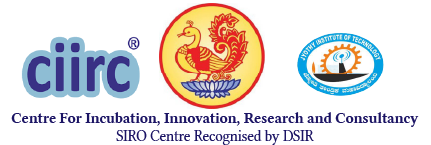Overview
Cancer Biology
Cancer continues to be the leading cause of mortality worldwide and contributes significantly to socio-economic issues across all societies and nations. Understanding and developing treatments for cancer is a challenge for the scientific community all around the globe. Research at the Cell and Molecular Biology laboratory is primarily focused on understanding the molecular mechanisms underlying tumor metastasis with particular emphasis on the role of cell junction complexes during tumor progression. Studies are also focused on understanding the genotypic and phenotypic characteristics of normal cancer cells and cancer stem cells, the unique features that can be utilized as criteria/markers for rapid and early detection of cancers. Other areas of research interest include understanding the cancer genome heterogeneity among the subpopulation of cancer cells in tumor, using computational tools, and to elucidate the mechanism of anti-cancerous properties of specific medicinal plants.

Cancer biology
Dynamics of cell junction proteins during tumor progression
Cell junction complexes play a major role in cell adhesion and migration which are highly regulated during crucial processes like embryogenesis, wound healing and also in perturbed conditions as in tumorigenesis. It is well-established that alterations in cell adhesion processes are the hallmark of aggressive malignant tumors. Much of the research in cancer, over the last decade, has been focused on understanding the metastatic potential of cancer cells. Metastasis is a complex multi-step process involving cell invasion, migration, intra/extravasation, and changes in cell adhesion properties. Once the tumors are formed at the primary site, they shed some of the cells to the circulatory system through a process termed as Epithelial to Mesenchymal transition (EMT).These circulating tumor cells (CTC) disseminate into distant sites and colonize them through a reverse process to EMT called Mesenchymal to Epithelial transition (MET). Both EMT and MET help cells to re-establish at target site, thus completing the metastatic loop as shown in figure.

Schematic representation of the metastasis formation by circulating tumor cells (CTCs) undergoing epithelial to mesenchymal transition (EMT) and mesenchymal to epithelial transition (MET) changes in their cellular characteristics
The circulating tumour cells (CTC) are different from the cells at primary tumour in that they have metastatic potential. Some of the specific clonal population of CTC, called cancer stem cells (CSC), are responsible for driving tumour recurrence and metastasis. CSC have the capacity of self-renewal, have long term proliferative potential and are known to be highly resistant to chemo and radiotherapy. Since metastasis is the main reason for the tumour associated deaths, understanding the molecular mechanism of CTCs biology and the EMT process are the key focus of current research. During EMT, cancer cells change their adhesive property to more of migratory and invasive characteristics which involve dramatic reorganization of cytoskeleton and cell junction complexes. The molecular processes that determine such cellular changes are poorly understood and many dynamic cell junction proteins require better functional and molecular characterization. In order to better understand the molecular mechanism of regulation of cell junction proteins, it is relevant to identify the potential binding partners of these cell junction proteins. To identify the potential binding partners, a global approach of screening the cDNA library of humans was undertaken using yeast two hybrid system. A schematic representation of identifying protein-protein interaction using human cDNA library is shown in the Figure 2 (A and B).The representative positive clones of the library screening is shown in the Figure c.

(A) Schematic representation to determine protein-protein interaction through yeast two-hybrid system. The protein of interest “X” is expressed as a fusion of GAL4-DNA binding domain and forms a bait plasmid and the protein “Y” is expressed as a fusion of GAL4 activation domain and this represents the prey plasmid. If both the proteins interact with each other, their interaction drives the expression of reporter genes
(B) Schematics of the Yeast two hybrid library screening of one of the cell junction protein along with the human cDNA library
(C) Representative of the diploids growing on selective nutrient media. The blue colonies represent the interaction between two proteins
Cancer Genomics
Evidences from recent studies have supported the theory that cancer is a disease of genomes and that cancer cells exhibit high genomic heterogeneity within the tumor. Whole genome sequencing of single cancer cellswithin the tumor using next generation sequences (NGS) technologies at the lab have enabled the researchers to understand the clonal evolution of mutations and how these mutations have contributed to tumor progression and therapeutic resistance. To better understand the mutational status in cancers, researchers at the lab, with collaborators in the computational engineering laboratory, are developing databases to identify multiple cancer biomarkers from whole genome sequencing data. The developed databases can be utilized for diagnosis, clinical and translational research and for academic purposes.
- Kumar, V.D., Balaji, K.R., Viswanatha, R., Ambika, G., Roopa, R., Basavaraja, B.M., Chennabasappa, M., Kumar, C.R., Chen, Z., Bui, X.T. and Santosh, M.S., 2022. Visible light photodegradation of 2, 4-dichlorophenol using nanostructured NaBiS2: Kinetics, cytotoxicity, antimicrobial and electrochemical studies of the photocatalyst. Chemosphere, 287, p.132174. IF: 7.0
- Savita, A.M., Nageswaran, G.R. and Reddy, R., 2021. Comparative analysis of cytocompatible properties of the root surface exposed to diode laser (970 nm) as adjunct to scaling and root planing: An in vitro study. Journal of Oral and Maxillofacial Pathology: JOMFP, 25(2), p.292. IF:1.85
- Reddy, R., Jiang, Q., Aramwit, P. and Reddy, N., 2021. Litter to Leaf: The Unexplored Potential of Silk Byproducts. Trends in Biotechnology, 39(7), pp.706-718. IF: 14.0
- Raju, V.M., Bhavana, V., Gayathri, G.K., Suryan, S., Reddy, R., Reddy, N., Ravikumar, C.R. and Santosh, M.S., 2020. A novel disposable electrochemical DNA biosensor for the rapid detection of Bacillus thuringiensis. Microchemical Journal, 159, p.105434. IF: 4.8
- Nataraj, D., Reddy, R. and Reddy, N., 2020. Crosslinking electrospun poly (vinyl) alcohol fibers with citric acid to impart aqueous stability for medical applications. European Polymer Journal, 124, p.109484. IF:4.5
- EVOS XL Core Imaging system
- Veriti 96 Well Thermal Cycler
- BioRad- Chemi Doc XRS+ Imaging System
- Thermo Scientific Multiskan GO
- Thermo Scientific 1300 Class II
- B2 Biological Safety Cabinet
- Thermo Scientific BB 150 Co2Incubator
- Thermo Scientific Legend Micro-centrifuge
- Utilization and Commercialization of by-products of sericulture industry through value addition” Karnataka state sericulture research and Development Institute, Department of Sericulture, GoK, (2020 to 2022), Co-Investigator (SSPS)
- Development of protein based films and scaffolds for medical applications (SSPS)
- Evaluating the barrier function and inflammatory response on application of dermatalogical formulation on pollution exposed and unexposed corneocytes of skin samples by tape strip method. M S Clinical Research Pvt. Ltd.

Roopa Reddy
Roopa Reddy, a genetics and cancer biology researcher, is currently an Associate Professor in Cell and Molecular Biology Laboratory. After her initial training in microbiology in India, she pursued her studies and obtained an MS degree in Veterinary and Biomedical Sciences from University of Nebraska (UNL), Lincoln, and a Ph.D. in Medical Sciences from the University of Nebraska Medical Centre (UNMC), Omaha, USA. With about nine years of research experience in different domains of biology, including microbiology, genetics and molecular biology, and cancer biology, her current research is focused on understanding the dynamics of cell junction complexes during tumor progression. Using yeast as a model organism, she has identified many novel protein-protein interactions and potential binding partners of the protein of interest by screening whole cDNA library of humans.
In collaboration with the computational engineering group at the Centre, she is involved in developing a software for identifying multiple cancer biomarkers from whole genome sequence data of cancer patients, which holds great promise for personalized cancer therapy. The proposed software can be applicable for diagnosis, clinical and translational research and can be used for academic purposes. Other areas of her research interest include understanding host pathogen interactions in disease conditions and elucidating the mechanism of action of anti-cancerous properties of selected medicinal plants.
She is a recipient of prestigious Fellowship from University of Nebraska (UNL)during her MS program. In recognition of her work in cancer research during her Ph.D. program, she was awarded the highly competitive and prestigious Graduate Research Fellowship through the University of Nebraska Medical Centre (UNMC) for three successive years. She has publications in some of the high impact factor international journals. As part of her academic responsibilities, she currently teaches Food Chemistry for M.Tech. (Food Technology) students. Apart from her research and academic activities, she has been instrumental in guiding students in their short term internship projects. She has conducted workshops on cell based assays and sophisticated instruments, and is a consultant for a few industry projects.
Email Id: roopa.reddy@ciirc.jyothyit.ac.
